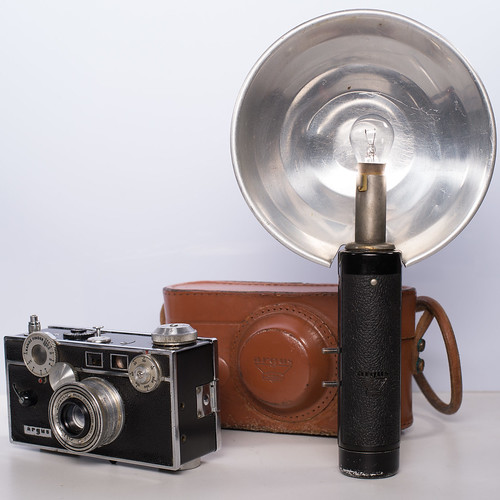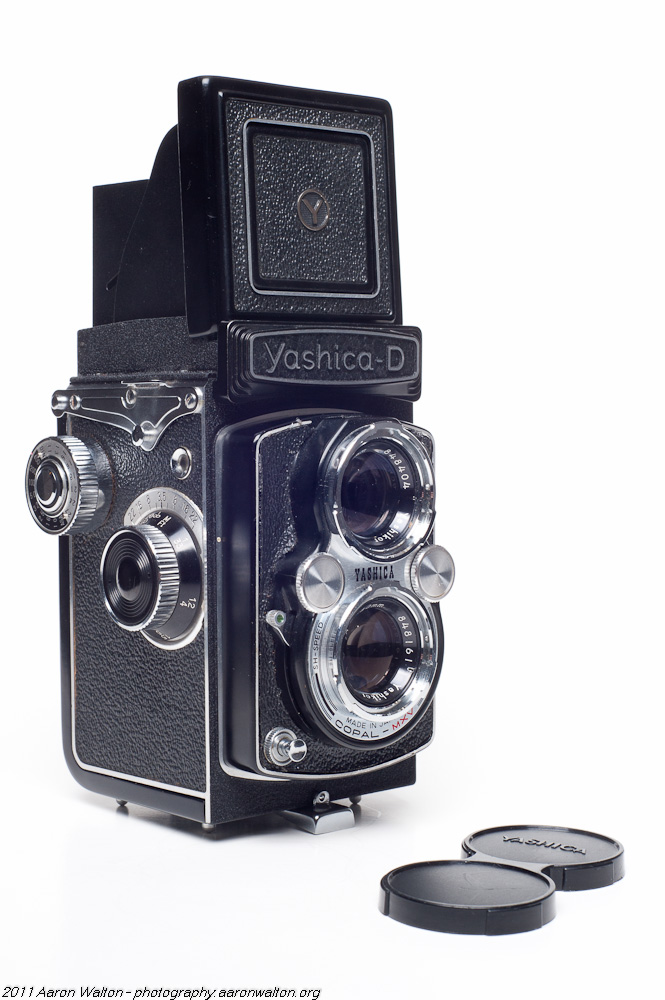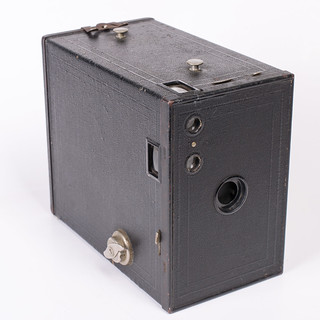Film for Classics
Dick Haviland
+1 716-624-4945
P.O. Box 486
Honeoye Falls, New York 11472
link
| The Argus C series had been called “the brick”. C3 is similar to the C2, but with flash sync attachment holes on left end. Argus is an American maker of cameras and photographic products, founded in 1936 in Ann Arbor, Michigan. Argus originated as a subsidiary of the International Radio Corporation (IRC), founded by Charles Verschoor. Its best-known product was the C3 rangefinder camera, which enjoyed a 27-year production run and became one of the top-selling cameras in history. The company’s Model A was the first low-cost 35 mm camera in the United States. Argus was acquired by Sylvania in 1959 and sold off in 1969, by which time it had ceased camera production (some rebadged cameras continued to be sold under the Argus name through the 1970s). film type : 35mm shutter : leaf shutter, speeds: 10-300 +B Setting: dial on the left front of the camera; B setting is separate from the dial, by a collar beneath the shutter release, set to B, for speeds set to I lens : Argus Coated Cintar 50mm f/3.5 three elements filter slip-on Aperture: f/3.5-f/16 Focus range: 3-50 feet +inf Focusing: match the rangefinder images in the rangefinder eyepiece, rangefinder coupled to the lens with a gear picture size : 135mm x 86mm produded between : 1939-1957 original list price (USD) : Lens coating: Uncoated before July 1946. Some coated lenses are labeled “Coated Cintars”, others don’t have the “Coated”, so look closely. Shutter speeds: Seven speeds 10 – 300: 1945 – 1953 Weston film reminder dial: 1945 – 1948 No badge: 1945 – 1950 |
| a Kodak No. 2-A Folding Cartridge Premo.
Film Size: 116 – 120 Kodak Folding Cartridge Premo No. 2A manual Having taken over the “Rochester Optical and Camera Company” in 1903, Eastman Kodak produced cameras with the “Premo” name until 1926. Very few Premo models were marketed in Europe. |
a Brownie Bull’s EyeThe sheer bulk of this heavy Bakelite camera, the mouldings are over 1/4 inch thick in places. The focussing Twindar lens in a single speed shutter has a preset at 10 feet for general snapshots. Once an exposure has been made, an interlock acts on the shutter release and a warning symbol appears in the viewfinder. Pin & Screw flash contacts are provided, as is a tripod socket. The default format is ‘portrait’, for ‘landscape’ photographs the recommendation is to hold the camera shutter-button side up. film type : 620 film type : 620shutter : Rotary lens : Twindar picture size : 6 x 9 cm produced between : 1954 – 1960 original list price (USD) : 13.00 |
| The Yashica-D The Yashica-D has a Copal shutter, with shutter speeds of 1 – 1/500. It provides a PC connector for flash sync; and because it uses a leaf shutter it is capable of X sync at all shutter speeds. Be sure to set the flash switch to the “X” position when using an electronic flash. The M setting is only used for flash bulbs (now hard to find). Early models were equipped with coated three-element Yashikor 80mm f/3.5 viewing and taking lenses, while later models had the higher-quality, four-element Yashinon 80mm lenses; an f/3.2 viewing lens and an f/3.5 taking lens. The last Yashica-D models were equipped with bright 80mm f/2.8 Yashinon viewing lenses; models with this viewing lens and the Yashinon taking lens are very desirable on the used market. The taking lens accepts Bay I filters and hoods. Use a hood to prevent flare.
Shutter speed and aperture are set by turning small dials on the front of the camera just above the taking lens until the appropriate number appears in a window on the top of the viewing lens. Film is advanced by manually cranking the advance wheel until it stops turning. A small frame counter is visible on the side of the camera near the film advance knob. Use of a cable release requires a Leica nipple. |
|
No 2A Brownie Model B
Brownie is the name of a long-running popular series of simple and inexpensive cameras made by Eastman Kodak. The Brownie popularized low-cost photography and introduced the concept of the snapshot. The first Brownie, introduced in February 1900,[1] was a very basic cardboard box camera with a simple meniscus lens that took 2¼-inch square pictures on 117 rollfilm. With its simple controls and initial price of $1, it was intended to be a camera that anyone could afford and use, hence the slogan, “You push the button, we do the rest.” The camera was named after the popular cartoons created by Palmer Cox. No 2A Brownie Model B ManualMANUFACTURER: Eastman Kodak Company NATIONALITY: American PLACE MANUFACTURED: US, NY, Rochester INTRODUCTION DATE: October 1911 ORIGINAL LIST PRICE: $3 FUNCTIONAL TYPE: Box rollfilm |
|
No 2A Brownie Model C
Brownie is the name of a long-running popular series of simple and inexpensive cameras made by Eastman Kodak. The Brownie popularized low-cost photography and introduced the concept of the snapshot. The first Brownie, introduced in February 1900,[1] was a very basic cardboard box camera with a simple meniscus lens that took 2¼-inch square pictures on 117 rollfilm. With its simple controls and initial price of $1, it was intended to be a camera that anyone could afford and use, hence the slogan, “You push the button, we do the rest.” The camera was named after the popular cartoons created by Palmer Cox. No 2A Brownie Model C Manual MANUFACTURER: Eastman Kodak Company NATIONALITY: American PLACE MANUFACTURED: US, NY, Rochester INTRODUCTION DATE: October 1911 ORIGINAL LIST PRICE: $3 Aluminum model $3.75 FUNCTIONAL TYPE: Box rollfilm |
|
Argus ArgoFlex E
Original, Art Deco plastic bodied TLR produced in two versions. Early version accepted 120 & 620 film, the latter (after mid-1946) marked “620 only.” Mine is serial 822176, it was broken at the right angle area just at the back and bottom of the unit. This is the 620 only version. |







